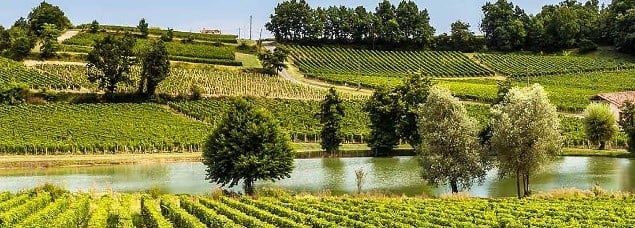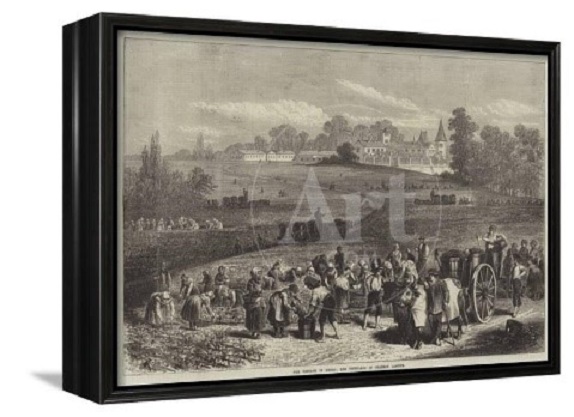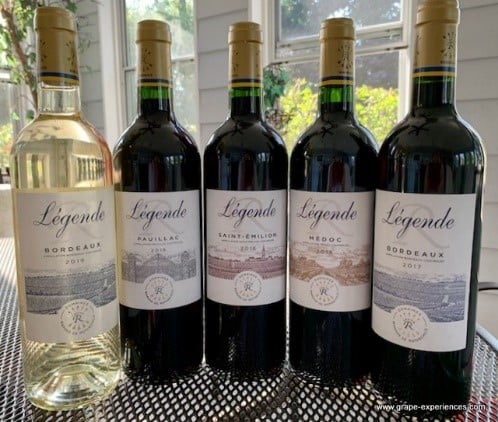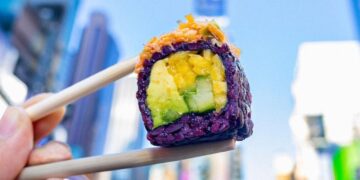[ad_1]
- The Bordeaux area is the biggest wine producing area in France and consists of 280,000 acres of vines and 60 Appellations d’Origine Controlees (AOCs).
- Wine making within the southwestern portion of France began when the Romans arrived (suppose first century).
- Though the world is acclaimed for its pink wines, it’s fascinating to notice that this fame is newly acquired.
An Abundance of Wineries
Traditionally, the Bordeaux area was fascinating for its (largely) white wines with winemakers devoting extra that 80 % of their vineyards to Sauternes, Barsac, Bordeaux Blanc and Graves.
It was not till the 1700s that pink wine from Bordeaux interested the marketplace and English wine lovers embraced the pink Bordeaux wines from Graves and named it Claret (klairette). As soon as the winemakers observed the uptick within the buy of pink wines, they started to transition from white to pink wine manufacturing. The transformation turned official within the 1855 Classification that recognized one of the best producers within the area, rating them 1-5. The classification has by no means been modified (besides as soon as) regardless that there are lots of different excellent wines.

To show how in style the world is for wine making, contemplate the truth that the area helps 6100 chateaux homeowners and different growers who produce 650 million bottles of wine (2019). The 2019 classic included 85.2 % pink; 4.4 % rose; 9.2 % dry white, and 1.2 % candy white.
Bordeaux is the foremost employer in viticulture and the wine business, supplying over 55,000 direct and oblique jobs. Three out of each 4 agricultural estates within the area develop vines and in complete there are 5,6000 winemakers producing AOC wine. Of those 56 % are family-owned companies, with a median winery dimension of 19.6ha with the largest vineyards in Entre deux Mers and the Medoc. Approximated 5 % of the general winery floor of Bordeaux belongs to labeled estates throughout the Left and Proper banks (winescholarguild.org).
Within the area, chateaux homeowners normally promote their grapes by means of a negociant who acts as a center individual by buying their allocations of grapes and promoting / distributing the ensuing wine. Of the wine produced within the Bordeaux area, 58 % is offered inside France with the remaining 43 % exported worldwide.
Not Politics. Geography: Left, Proper, Center

The Bordeaux area is split geographically by the Gironde estuary right into a Left Financial institution, Proper Financial institution and Entre-Deux-Mer (the world between the Gironde Estuary and the Dordogne River).
Left Financial institution. Wine lovers discover Medoc, Graves and Sauternais (greatest terroirs – gravel based mostly)
• Medoc options Cabernet Sauvignon; the grapes develop in a mixture of clay soil and alluvial gravel terraces.
• Graves options Cabernet Sauvignon; gravelly soil as a result of historic glacial exercise.
• Sauternais options Sauternes (candy white wines); intense gravelly soil which allows drainage, stopping grapes from having an excessive amount of water.
Proper Financial institution. Wine lovers discover Libournais, Balye and Bourg (soils dominated by clay and limestone)
• Libournais options Saint-Emilion, Montagne, Pomerol, Fronsac, Cotes de Castillon; largely limestone, sandy and siliceous clay soil.
• Balye options Merlot, Cabernet Sauvignon and Cabernet Franc; largely clay over limestone soil.
• Bourg options Malbec, Sauvignon Blanc, Muscadelle, and Semillon in addition to Colombard and Ungi; sand, clay, gravel and limestone soils.
Entre-Deux-Mers (solely white wines carry AOC appellation); Cadillac, Loupiac, Sainte-Croix-du Mont
• Cadillac (recognized for its candy botrytized white wines) options Semillon, Sauvignon Blanc and Sauvignon Gris; chalky and gravelly soils.
• Loupiac options Semillon, Sauvignon Blanc, Muscadelle and Sauvignon Gris; clay, limestone soil composed of gravels and clay.
• Sante-Croix-du Mont options Semillon, Muscadelle, and Sauvignon; clay, limestone soil.
The white Bordeaux wines are normally made with Sauvignon Blanc and Semillon and are famous as being full of life and contemporary (Entre-Deux-Mers) to tender and citrus-like (Pessac-Leognan).
The pink wines from Bordeaux are usually medium-full-bodied with the scent of black currants, plums and earth or moist gravel. On the palate, the flavour profile consists of minerality, fruit and spice, delivering numerous tannins (good for ageing).
The pink Bordeaux is normally a mix with labels stating the wine’s appellation moderately than the precise grape selection included. White varieties comprise the remaining 100% of vines planted, with 5 % Sauvignon Blanc and Semillon with one % Muscadelle and different whites.
Of the vines planted within the area, 89 % are pink varieties, 59 % Merlot, 19 % Cabernet Sauvignon, 8 % Cabernet Franc and the ultimate two % embody Petit Verdot, Malbec or Carmenere.
Whether or not the Climate

The Bordeaux vines take pleasure in lengthy, heat summers, a moist spring and fall, adopted by average winters. La Foret des Landes, a big forest of pine bushes, protects the Bordeaux area from the maritime local weather influences of the Atlantic Ocean; nonetheless, local weather change is impacting the area and effecting yields. The Institut Nationwide de l’origine et de la Qualite (INAO), a division of France’s Ministry of Agriculture, spent a decade researching local weather change. Wine scientists and growers in Bordeaux significantly contemplate the impression of worldwide warming and just lately accepted new varieties well-suited to alleviate the hydric stress related to temperature will increase and shorter rising cycles.
In June, 2019, the Bordeaux and Bordeaux Superieur Associations accepted the addition of seven new illness and heat-resistant grape varieties and this represents the primary modification to the area’s unique 13 varieties since 1935. The seven new accepted varieties embody pink (Marselan, Touriga Nacional, Castets, Arinarnoa), and white (Alvarinho, and Lilorila) with first plantings of recent varieties scheduled for this yr. The brand new varieties are restricted to five % of the planted winery space and can’t account for greater than 10 % of the ultimate mix of any given colour.
Bordeaux has launched different enological and agricultural practices to take care of local weather change together with: adapting greatest practices to the wants of every classic – delayed pruning, growing vine trunk peak to scale back leaf space; limiting leaf-thinning to guard grapes from the solar; adapting pot websites to reduce hydric stress (completely or seasonally saturated by water leading to anaerobic situation); evening harvesting and lowering plant density.
Sustainable
Greater than 65 % of the Bordeaux vineyards are licensed environmental (a brand new yardstick for the area). Bordeaux leads all French AOPs in quantity of Excessive Environmental Worth (HVE) certifications for his or her wineries, having reached the highest degree of sustainable certification in France and a 30 % enhance in natural agriculture.
Winemakers in Bordeaux share a collective imaginative and prescient and dedication to proactively tackle local weather change by preserving scarce water and vitality sources; defending fragile ecosystems; and supporting biodiversity from greatest winery practices to various packaging. The dedication to sustainability consists of consideration to enhancing employee security, job satisfaction and coaching and improvement/coaching for present and future generations.
Necessary Wine Chateau in Bordeaux
Domaines Barons de Rothschild (Lafite) Les Legendes Makes Wonderful Wines Reasonably priced

The wine histories of Lafite and Latour spans centuries. The primary time the Lafite title seems dates again to the thirteenth century (1234) when Gombaud de Lafite, an abbot of the Vertheuil Monastery (north of Pauillac) is talked about. The title Lafite comes from the Gascon language time period “la hite” or hillock.
It’s surmised that vineyards have been already on the property when the Segur household organized the winery within the seventeenth century and Lafite started to be generally known as an amazing winemaking property. Within the 18th century Lafite started to discover the London market and was famous within the London Gazette (1707) describing the wine because the New French clarets. Robert Walpole, the Prime Minister, bought a barrel of Lafite each three months. The French curiosity within the wines of Bordeaux didn’t start till a few years later following within the footsteps of the Brits.
Through the 18th century Marquis Nicolas Alexandre de Segur improved the winemaking methods and enhanced the status of wonderful wines in international markets and particularly on the Court docket of Versailles. Often called “The Wine Prince,” Lafite turned The Kings Wine with the help of an in a position ambassador, the Marechal de Richelieu. When Richelieu was appointed Governor of Guyenne, he consulted a Bordeaux physician who suggested him that Chateau Lafite was, “the best and most nice of all tonics.” When Richeliu returned to Paris, Louis XV informed him, “Marechal, you look twenty-five years youthful than you probably did whenever you left for Guyenne.” Richeliu claimed he discovered the Fountain of Youth with Chateau Lafite’s wine which as, “scrumptious, beneficiant, cordial, akin to the ambrosia of the Gods of Olympus.”
Lafite had glorious publicity at Versailles and he obtained the King’s approval. Everybody now wished the Lafite wines and Madame de Pompadour introduced it together with her supper receptions and Madame du Barry served the King’s Wine completely.
The treasured Bordeaux wines of French aristocracy (Domaines Barons de Rothschild/Lafite) can be found to us by means of the Legende model.

1. Legende Medoc 2018. 50 % Merlot, 40 % Cabernet Sauvignon, 10 % Petit Verdot. Partly aged in oak for 8 months giving notes of vanilla and smoky undertones.
The attention is delighted with the extreme pink hue whereas the nostril is entertained with the brave perfume of candy spice, pink fruits, a mixture of candy, bitter, salty and bitter (suppose licorice), enhanced by notes of mocha and toast from barrel ageing. The style lingers on the palate presenting an expertise that’s agile and flavorful delivering freshness on the end. Pair with beef, lamb, venison, or poultry.
2. Legende R Pauillac 2017. 70 % Cabernet Sauvignon, 30 % Merlot. Sixty % aged in French oak for 12 months.
The primary sight impression of this deep purple wine with hints of black counsel it is going to be refined and discreet. The nostril discovers a wonderful bouquet of spice, raspberry jam, vanilla and flint fortunately mingling collectively. Self-confident on the palate, it delivers traces of black fruit, coconut, and vanilla with coated tannins. This can be a full-bodied wine and that makes a daring assertion. Pair with beef steak, stew, matured cheeses akin to Comte and Saint Netaire.
3. Legende Saint-Emilion 2016. 95 % Merlot, 5 % Cabernet Franc (from Libourne subregion). Forty % aged in French oak barrels.
The primary have a look at this wine presents a shiny black cherry pink hue. The nostril is comfortable when it finds licorice, plums, cherries, woodchips and tobacco. The palate is rewarded with ideas of mocha, herbs, cloves, fragrance, outdated wooden and a wealthy tannin construction. Pair with duck or recreation terrine and quince jelly, shoulder of lamb roasted with rosemary or thyme, pizza and pasta napolitana or lasagna.
4. Legende R Bordeaux Rouge 2018. 60 % Cabernet Sauvignon, 40 % Merlot.
Aged 9 months in concrete vats and 60 % of the ultimate mix aged in barrels.
Crimson to the attention with the pink fruit and blackberries, licorice and candy spice seducing the nostril, particularly eager because the scent of mocha and toast from barrel growing older chime in to the expertise. Contemporary and fruity on the palate, the end is pleasantly fruity. Pair with risotto with meat sauce, pasta Bolognese, ham and salami.
5. Legende R Bordeaux Blanc 2020. 70 % Sauvignon Blanc, 30 % Semillon.
The attention is delighted with the palest of golden yellow with glints of straw. The nostril is rewarded with ideas of tropical fruit and hints of minerality. The palate is seduced by spherical and full-bodied flavors resulting in a full of life citrus- contemporary end. Pair with seafood, uncooked oysters, something with Bearnaise sauce and a inexperienced salad (non-vinegar dressing).
© Dr. Elinor Garely. This copyright article, together with photographs, is probably not reproduced with out written permission from the writer.
[ad_2]
Source link








